This article has links to products that I may make commission from.
Companion planting with peascan play a pivotal role in creating a vibrant and productive garden.
This age-old practice harnesses the power of nature, allowing pea plants to flourish alongside their pea companions.
In this guide, we delve deep into the art and science of choosing the right companion plantsto grow with your peas, enhancing both their health and yield.
We'll also guide you through selecting the best seeds to ensure your companion planting journey is as fruitful and rewarding as possible.
Join us as we explore the synergistic relationships in the garden and uncover the secrets to a thriving, sustainable ecosystem.
To learn more about growing peas, check out my guide The Ultimate Guide to Growing Peas in Pots.
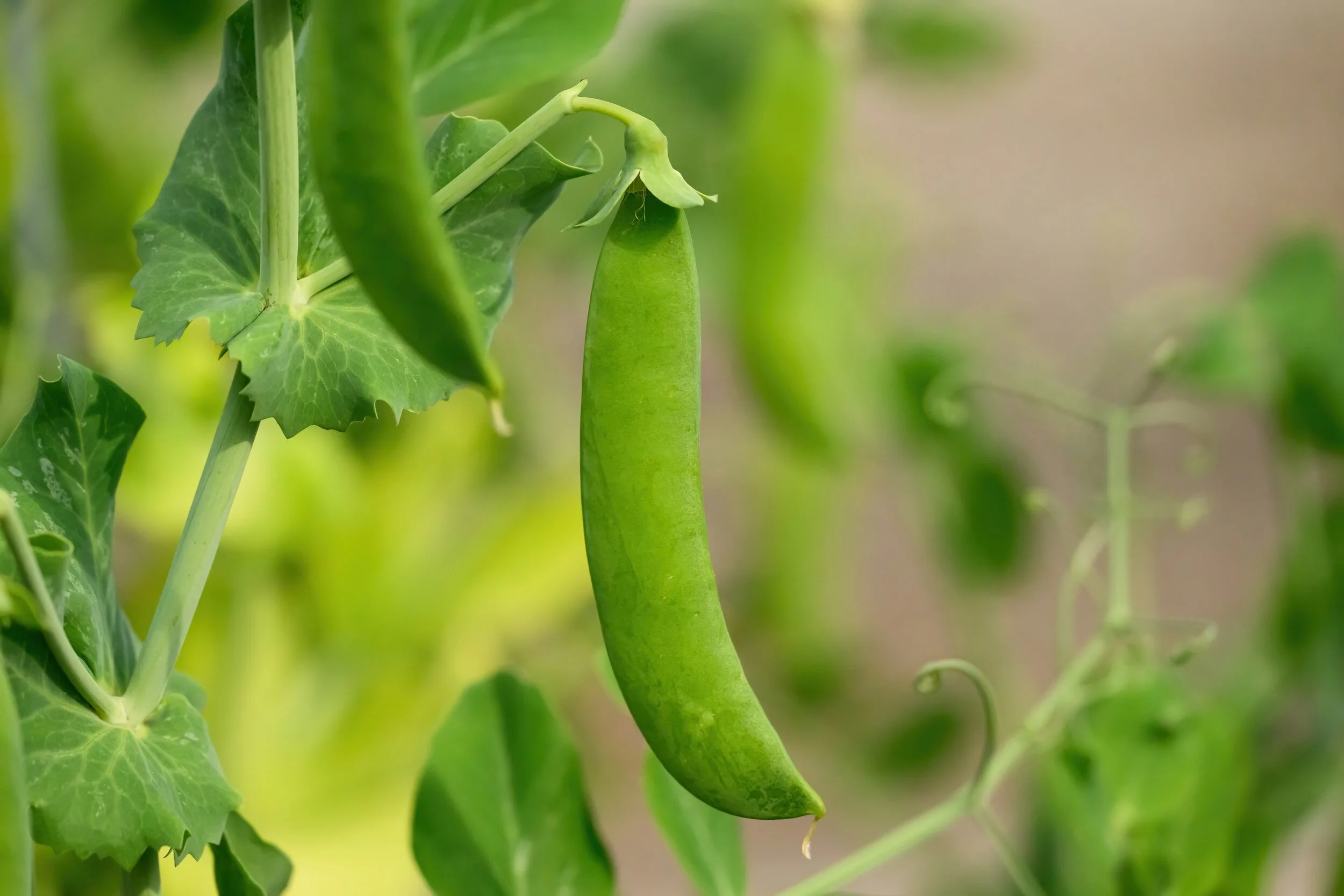
Why Choose Peas for Companion Planting?
Companion planting with peas offers a multitude of benefits for the garden, ranging from improving soil health to supporting the growth of nearby plants.
Here's why peas are an ideal choice for companion planting:
Nitrogen Fixation
Natural Soil Enrichment:
Peas belong to the legume family, which have the unique ability to fix nitrogen from the atmosphere.
This process involves converting atmospheric nitrogen into a form that plants can absorb, enriching the soil without the need for chemical fertilizers.
Beneficial for Following Crops:
The nitrogen fixed by peas remains in the soil even after the peas are harvested.
This makes the soil richer for the next set of crops, making peas an excellent choice in crop rotation strategies.
Pest Control and Attraction of Beneficial Insects
Natural Pest Deterrents:
Certain types of peas, especially those with a strong scent, can deter specific pests, reducing the need for chemical pesticides.
Attracting Beneficial Insects:
Peas can attract beneficial insects like parasitic wasps and ladybugs, which help control pests that may affect other plants in the garden.
This natural form of pest control is both eco-friendly and efficient.
Companion to Many Plants
Versatility:
Peas are compatible with a wide range of plants.
They work well with leafy greens like lettuce, root vegetables like carrots, and other staples like corn and beans.
This versatility makes them a valuable addition to any companion planting strategy.
Low Maintenance and Easy to Grow
Ease of Growing:
Peas are relatively easy to grow and do not require much maintenance.
They are a great choice for both beginner and experienced gardeners.
Cool Weather Friendly:
Peas thrive in cool weather, making them an excellent choice for early spring or late fall planting.
This extends the gardening season and allows for effective use of garden space throughout the year.
Improvement in Soil Structure
Enhancing Soil Quality:
The roots of pea plants help improve soil structure and prevent erosion.
Their deep roots can break up compacted soil, which improves aeration and water infiltration.
Aesthetic and Functional Benefits
Visual Appeal:
Pea plants, with their delicate flowers and tendrils, add beauty to the garden.
They can be grown on trellises, creating an attractive green backdrop or garden feature.
Edible and Nutritious:
Beyond their companion planting benefits, peas are also a nutritious addition to the diet, rich in protein, fiber, and vitamins.
By incorporating peas into your garden as companion plants, you not only enhance the growth and health of your garden but also contribute to a more sustainable and productive gardening practice.
Check out my guide: The Ultimate Guide to Growing Peas in Pots.

Best Companion Plants for Peas
Selecting the right companions for peas can significantly enhance the health and productivity of your garden.
Here’s a closer look at some of the best companion plants for peas and why they are beneficial:

Lettuce and Leafy Greens
Shared Growing Conditions:
Leafy greens like lettuce, spinach, and kale thrive in the cool weather conditions that peas prefer.
This makes them ideal companions for early spring or fall planting.
Shade Provision:
As peas grow taller, they can provide light shade for these greens, protecting them from harsh midday sun and helping to keep the soil cool and moist.
Here are the seeds I recommend growing:

Beans
Complementary Growing Habits:
Both peas and beans are legumes, so they share similar growing requirements.
This makes them good companions in the garden.
Structural Support:
Peas and beans can be grown together on the same trellis or support structure, making efficient use of vertical space in the garden.
Here is the trellis I recommend using.
And here are the seeds I recommend growing:
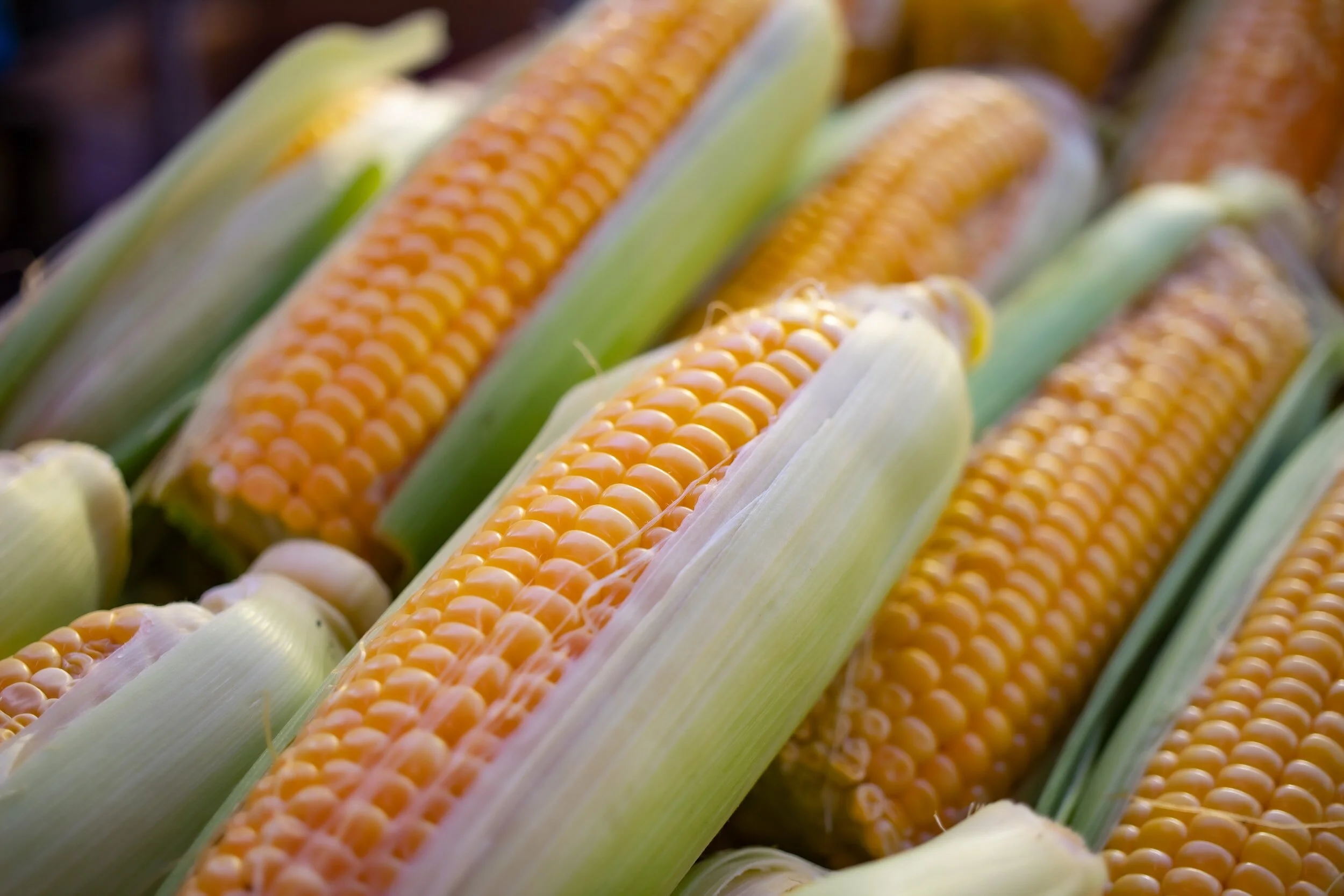
Corn
Natural Trellising:
Tall corn stalks serve as a natural trellis for climbing pea varieties, allowing them to grow upwards and saving space.
Mutual Support:
The relationship is reciprocal; peas provide nitrogen to the soil, which benefits the corn, a heavy feeder.
Here are the corn seeds I recommend:

Carrots and Radishes
Complementary Root Systems:
The deeper roots of carrots and radishes can help loosen and aerate the soil, benefiting the shallower-rooted peas.
Nitrogen Utilization:
These root vegetables take advantage of the increased nitrogen in the soil, courtesy of the peas.
Here are the carrot seeds I recommend:
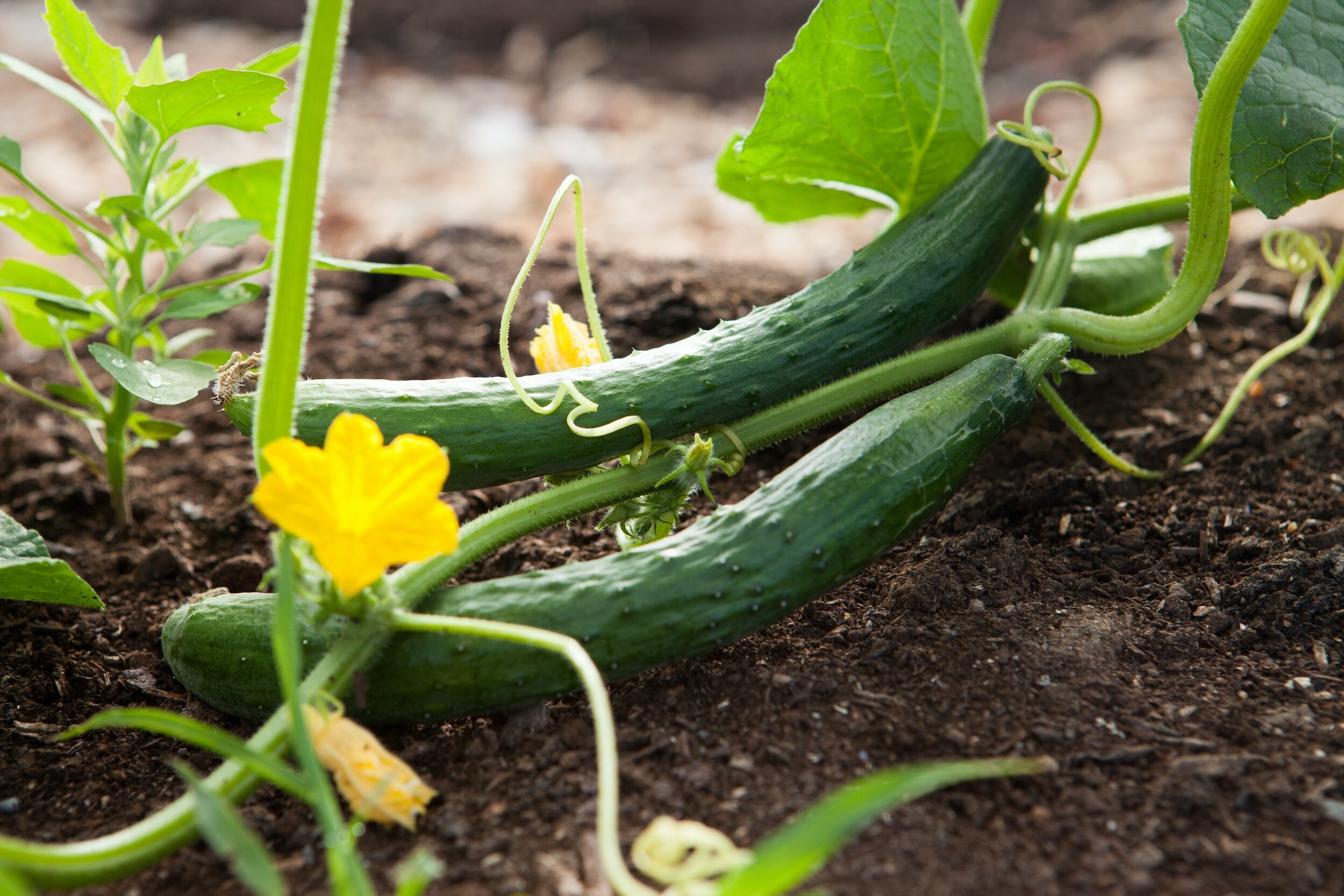
Cucumbers
Shared Preferences:
Cucumbers and peas both enjoy similar soil and water conditions, making them compatible garden mates.
Pest Deterrence:
The natural odors of cucumbers can help deter certain pests that may otherwise target pea plants.
Here are the cucumber seeds I recommend:

Herbs and Flowers
Attracting Beneficial Insects:
Herbs like dill and flowers like marigolds attract beneficial insects that can protect peas from pests.
Aromatic Protection:
The strong scents of some herbs can confuse or repel pests, providing a natural barrier to protect peas.
Here are the marigold seeds I recommend:
Want to learn more about companion planting? Check out my guides:
The Best and Worst Carrot Companion Plants
The Best and Worst Companion Plants for Asparagus
Companion Plants for Cauliflower: Attracting Beneficial Insects
Onion Companion Plants: Creating a Natural Ecosystem
Top Companion Plants for Growing Juicy, Sweet Strawberries
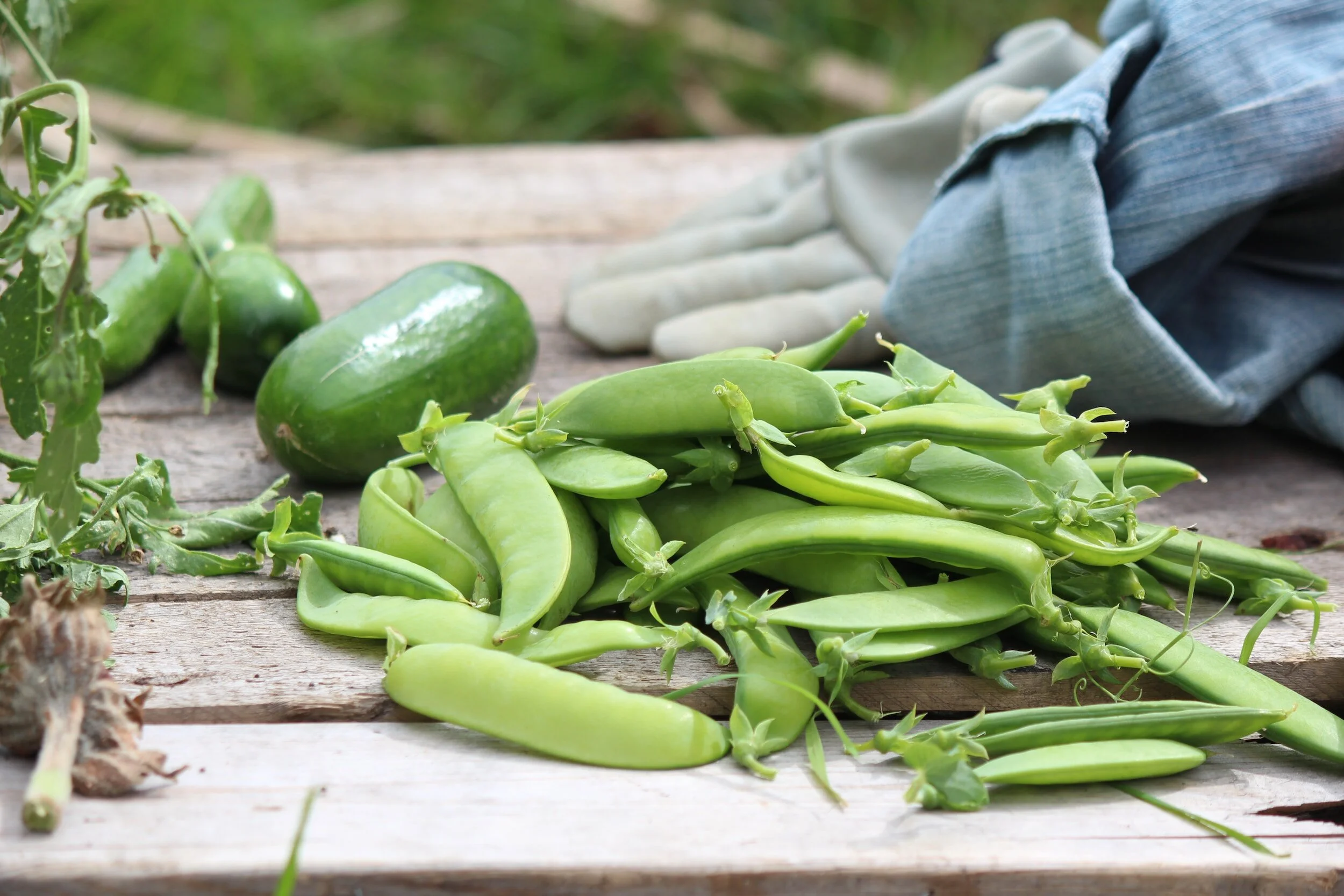
Plants to Avoid Planting Near Peas
While peas are compatible with many plants, there are certain plants that should be kept away from them to ensure optimal growth and health.
Understanding which plants are not conducive to the well-being of peas is crucial in companion planting.
Here are some key plants to avoid when planting peas:
Onions and Garlic
Allelopathic Properties:
Both onions and garlic belong to the allium family and are known for their allelopathic properties, meaning they release chemicals that can inhibit the growth of peas and other plants.
Competition for Resources:
These plants can also compete with peas for essential nutrients in the soil, potentially stunting the growth of your pea plants.
Potatoes
Disease Risk:
Potatoes can increase the risk of blight and other diseases that can also affect peas.
These diseases can easily spread from potatoes to peas, especially in damp conditions.
Nutrient Competition:
Potatoes are heavy feeders and may compete with peas for nutrients, particularly in soils that are not rich in organic matter.
Other Plants to Consider
Gladiolus and Chives:
Like onions and garlic, gladiolus and chives can also have adverse effects on peas.
Fennel:
Fennel is known to be a poor companion for most plants, including peas, due to its strong allelopathic tendencies.
Planning Your Garden Layout
Spatial Arrangement:
When planning your garden, consider the spatial arrangement of your plants.
Ensure that peas are planted at a sufficient distance from these incompatible plants.
Rotation:
Practice crop rotation to minimize the risk of disease and soil depletion.
Avoid planting peas in a bed where incompatible plants were grown in the previous season.
Understanding Companion Planting Principles
Balanced Ecosystem:
The principle behind companion planting is to create a balanced ecosystem where plants support each other’s growth.
This balance can be disrupted when incompatible plants are placed close to each other.
Observation and Adaptation:
Observing the reactions of plants to their neighbors and adapting your planting strategies accordingly is key to a successful garden.

Managing Pests in Pea Companion Planting
While peas are a valuable addition to any garden, like all plants, they can be susceptible to pests.
Effective management of pests is crucial for maintaining a healthy pea crop.
Here’s how companion planting can play a role in pest management for peas:
Identifying Common Pea Pests
Pea Pests:
The most common pests for peas include aphids, Mexican bean beetles, and pea weevils.
These pests can damage the plants by eating the leaves, stems, and pods.
Natural Predators:
Encouraging natural predators such as ladybugs, lacewings, and parasitic wasps in your garden can help control these pests.
These beneficial insects prey on the pests that harm pea plants.
Companion Plants for Pest Control
Marigolds and Nasturtiums:
These flowers can deter Mexican bean beetles and other pests.
Their strong scent confuses pests, reducing the likelihood of infestation.
Herbs like Dill and Oregano:
These herbs attract beneficial insects that prey on pea pests.
Dill, for instance, is particularly effective in attracting parasitic wasps.
Cultivation Practices to Reduce Pest Incidence
Healthy Soil:
Ensuring your soil is healthy and well-balanced can reduce the likelihood of pest infestations.
Healthy plants are more resistant to pests.
Crop Rotation:
Rotating crops annually can help prevent the buildup of pea-specific pests in the soil.
Physical Barriers:
Using floating row covers can physically prevent pests from reaching the pea plants.
Natural Pest Control Methods
Organic Pesticides:
If pests become a problem, consider using organic pesticides as a last resort.
These are less harmful to beneficial insects and the environment.
Manual Removal:
Sometimes, manually removing pests or infested parts of the plant is effective, especially in smaller gardens.
Monitoring and Maintenance
Regular Checks:
Regularly inspecting your pea plants for signs of pests is crucial.
Early detection can prevent a small problem from becoming a larger infestation.
Balanced Ecosystem:
Remember, a few pests are a part of a balanced garden ecosystem.
They can help maintain populations of beneficial insects.
By implementing these strategies, you can effectively manage pests in your pea crop through companion planting and good gardening practices.
This approach not only protects your peas but also contributes to a healthier, more sustainable garden environment.
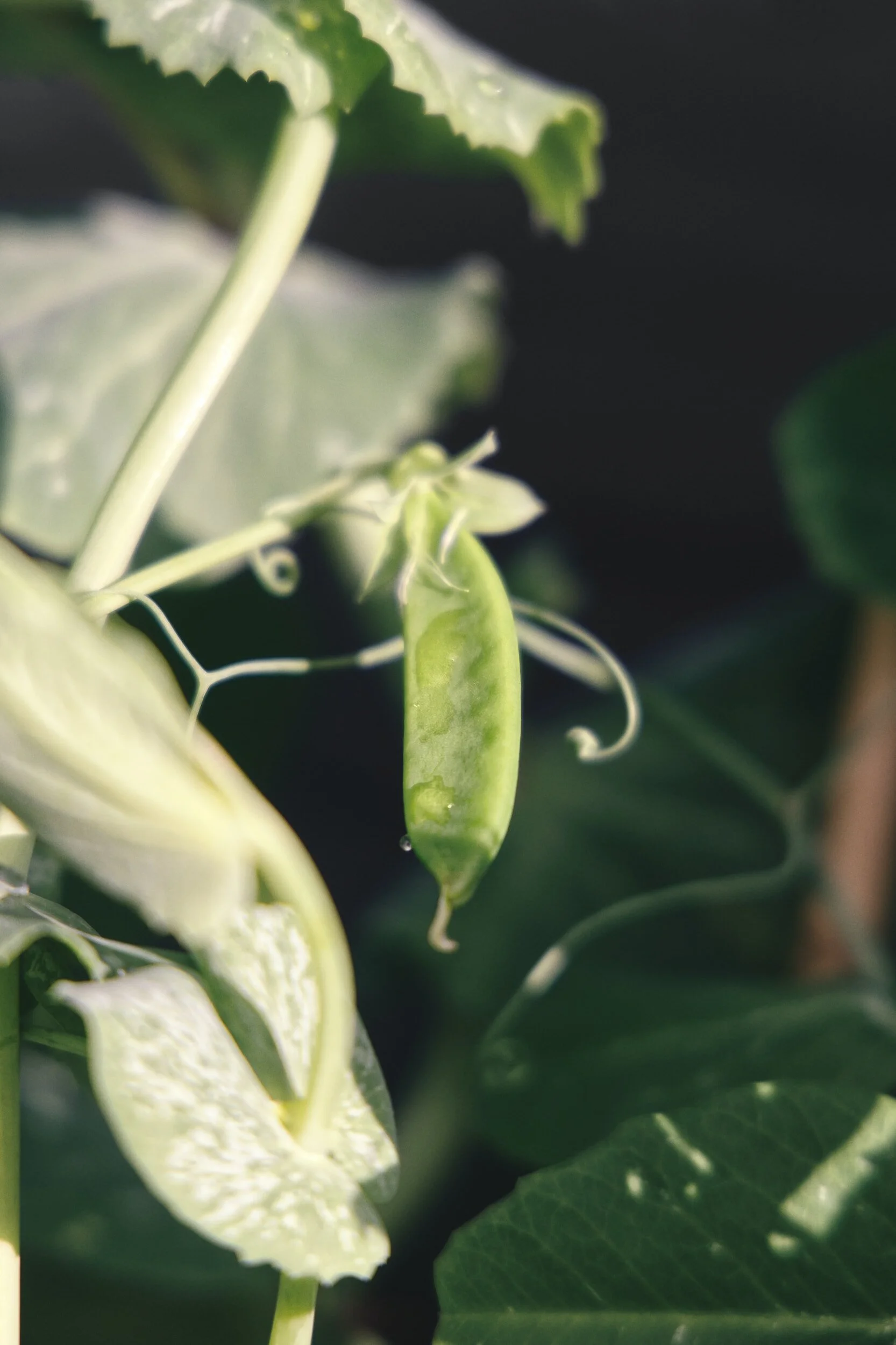
FAQ Section
When is the best time to plant peas for companion planting?
Peas thrive in cool weather, so the best time to plant them is early spring as soon as the soil can be worked, or in late summer for a fall harvest.
In cooler climates, you can plant them 4-6 weeks before the last expected frost date.
Can peas and tomatoes be planted together?
Yes, peas and tomatoes can be companion planted.
Tomatoes prefer warmer weather, so by the time they need more space and sunlight, the peas are usually ready to be harvested.
The peas also enrich the soil with nitrogen, which benefits the tomatoes.
What natural methods can I use for pest control in pea plants?
Encouraging beneficial insects, using physical barriers like row covers, practicing crop rotation, and manually removing pests are effective natural methods.
Planting pest-deterrent plants like marigolds can also help.
How do peas benefit the soil and other plants?
Peas are nitrogen-fixers, meaning they convert atmospheric nitrogen into a form that plants can use, enriching the soil.
This is especially beneficial for nitrogen-hungry plants like corn and tomatoes.
What should I avoid planting next to peas?
Avoid planting peas near onions, garlic, and potatoes.
These plants can compete for nutrients, space, or even release substances that inhibit pea growth.
Can I plant peas near beans?
Yes, beans are good companions for peas.
They have similar structural requirements and both enrich the soil with nitrogen.
However, ensure they have enough space and support for growth.
How much spacing is required between pea plants and their companions?
The spacing depends on the companion plant.
Generally, allow 18-24 inches between rows of peas and larger plants like tomatoes.
For smaller companions like lettuce, spacing can be reduced to about 12 inches.
Do peas need a trellis or support when planted with companions?
Climbing pea varieties benefit from a trellis or support, especially when planted with taller companions like corn.
Dwarf varieties may not need support, depending on their growth habit.
Can I use companion planting as the sole method for pest control in peas?
While companion planting can significantly reduce pest issues, it may not be a standalone solution for all pest problems.
It's best used in combination with other organic pest control methods.
How do I know which variety of pea to plant for companion planting?
Choose a variety based on your garden space and the needs of your companion plants.
For smaller gardens or companion planting with low-growing plants, dwarf varieties are ideal.
For larger spaces or companions like corn, climbing varieties work well.
Conclusion
Our journey through the world of companion planting with peas reinforces the significance of understanding plant relationships and making informed choices in our gardens. As we select seeds and plan our gardens, keeping these companion relationships in mind ensures a harmonious and productive garden. Embrace these principles of companion planting, and watch as your garden transforms into a more vibrant, sustainable, and bountiful space.
Latest Posts
Problems Growing Rhubarb: Simple Fixes
Read More →
How to Grow Marigolds from Seed
Read More →
Growing Tomatoes in Shade: Top 6 Varieties
Read More →
The Best Companion Plants for Dill
Read More →
Powdery Mildew on Zucchini: The Best Natural Remedies
Read More →
What is a Kitchen Garden?
Read More →
Perlite vs Vermiculite: What's Best for Your Garden?
Read More →
Deadheading Tulips: How to Do It Right
Read More →
Growing Lavender from Seed: The Easiest Ways
Read More →
The Best Gardening Books for Beginners
Read More →
Companion Plants for Raspberries (And Which Ones to Avoid)
Read More →
Deadheading Daffodils: How to Ensure Next Year’s Blooms
Read More →
How Often to Water Seedlings
Read More →
The Best Plants for Your South West Facing Garden
Read More →
A Guide to Growing Perfect Greenhouse Cucumbers
Read More →
The Best Seed Starting Mix
Read More →
Why is My Tomato Plant Not Flowering?
Read More →
Top Slug Resistant Plants to Transform Your Garden
Read More →
The Best Companion Plantsfor Tomatoes
Read More →
The Best Chive Companion Plants
Read More →
The Easiest Ways to Keep Cilantro from Bolting
Read More →
The Best Potatoes to Grow in Bags
Read More →
Propagate Oregano: How to Multiply Your Herbs
Read More →
The Easiest Way to GrowCalendula from Seed
Read More →
Garden Soil vs. Potting Soil: How to Choose the Right One
Read More →
The Best Plants for Your North Facing Garden
Read More →
The Best Vegetables to Grow in a Raised Bed from Seed
Read More →
How to Take Lavender Cuttings: Step-by-Step Guide
Read More →
Growing Carrots in Containers: The Ultimate Guide
Read More →
Grow Tomatoes Anywhere with Grow Bags
Read More →
Garden Guides, Vegetable Garden, Companion Plants
Laura Azcarraga
Comment





